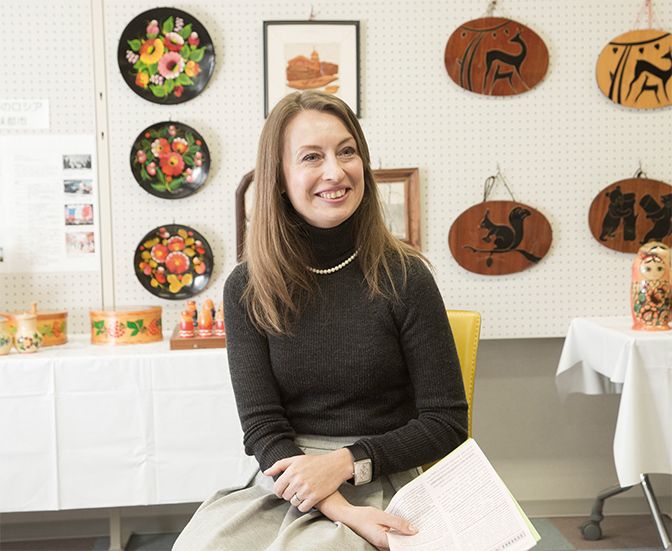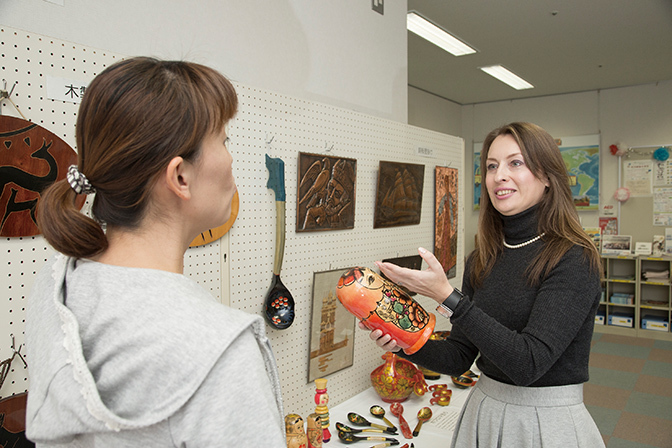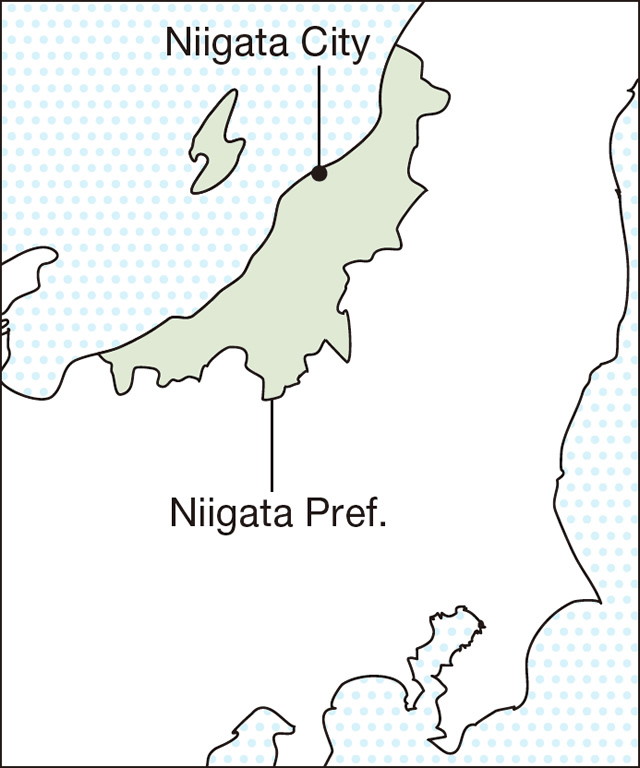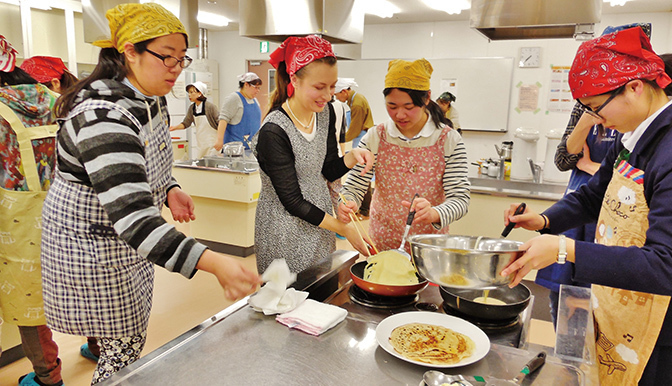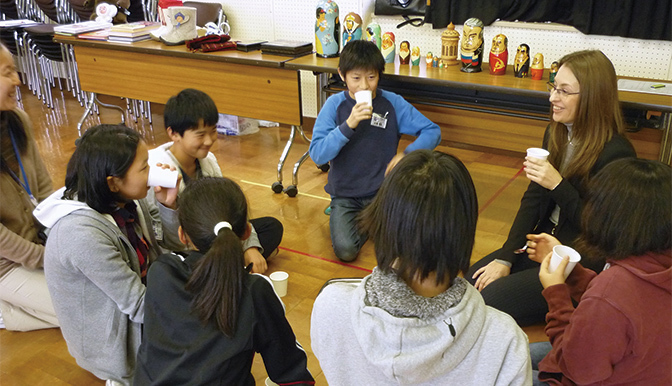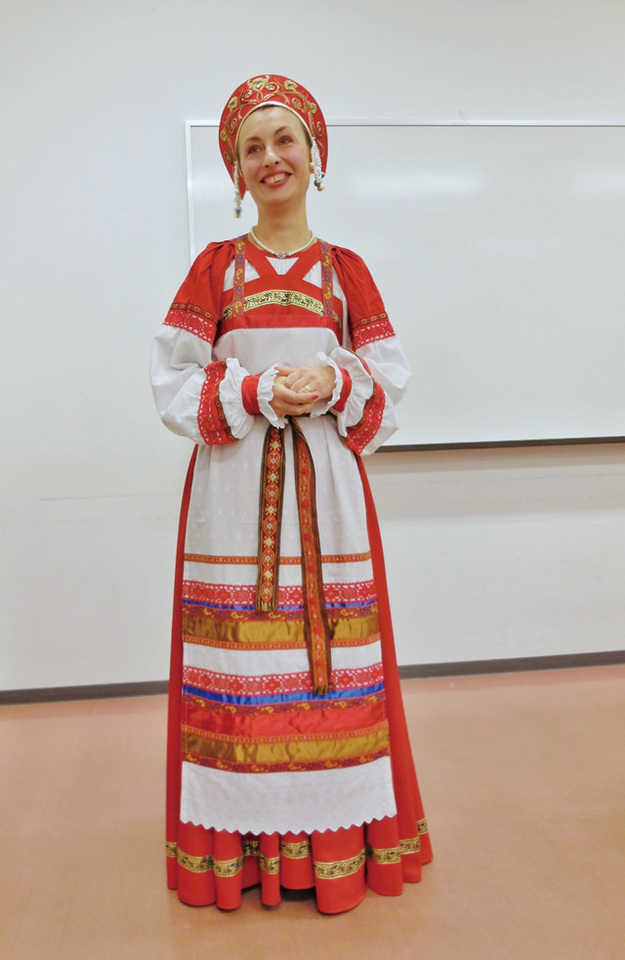Yuliya Im
Born in Dalnegorsk in Russia. Has been working as a CIR in Niigata since August 2015. Says that she “enjoys every minute” of life in Japan with her fourth-grade son, whom she brought over from Russia after she got settled here.
I was born in Dalnegorsk, a small town in Russia’s Primorsky Krai (Maritime Province) facing the Sea of Japan. I had an affinity for Japan from an early age. My father told me, “Over the sea lies Japan,” and I replied, “They should build a bridge from here to there.” My uncle, who was a sailor, used to bring back presents from Japan—sweets with pretty illustrations on their wrappings. I can still remember being very impressed by the elaborateness of those illustrations.
After that, when I first visited Japan, I quickly fell in love with the country. I was most impressed by the beautiful sound of the Japanese language. It sounded as if people were singing. I wanted to learn that sound, so I entered the Far Eastern State University of Humanities in Khabarovsk to study the Japanese language and then worked as a freelance interpreter and translator.
Since I longed to use my Japanese language skills in Japan and serve as a bridge between Russia and Japan, the JET Programme was like a godsend for me.The city of Niigata, where I was assigned to work as a Coordinator for International Relations (CIR), has been engaged in exchange with Russia for a long time, and it is home to many Russian residents.
My role as a CIR is to convey the attractions of Russia to Japanese and to supply information relating to Japanese society and culture to Russians. I am a bit of a shy person, though, so at first I would get nervous when I had to give presentations about Russian culture or chat in the Oshaberi Salon (oshaberi means “chatting” in Japanese). I had a battle with stage fright, but seeing the smiling faces of the elderly audience as they tried hard to understand me, I realized that exchange is not just built on the spoken word and that it is enough if people sense Russia through me. Since then, I have been able to engage in heart-to-heart exchange, inviting Japanese to my home to enjoy Russian cuisine and visiting Japanese homes to try homemade Japanese cooking.
The most memorable event in my activities so far occurred in the summer of this year, when I took a group of 19 Japanese students aged up to 16 years to Khabarovsk and Birobidzhan, which have sistercity ties with Niigata. We visited schools and a lifelong education center, and the students experienced singing and dancing with local children, as well as Russian food. Seeing them cheerfully communicate using gestures, simple English, and smartphone translation services, I felt how important it is to have a desire to communicate, even if you don’t have sufficient linguistic skills to do so.
My favorite Japanese expression is ichigo ichie , which means “treasure every encounter.” My encounter with JET has been a meaningful one. My dream of building a bridge from Russia to Japan has come true—I myself have become such a bridge. Making the most of my JET experience, I want to continue contributing to exchange between Japan and Russia.
About the Japan Exchange and Teaching (JET) Programme
The Japan Exchange and Teaching (JET) Programme began in 1987 with the goal of promoting grass-roots international exchange between Japan and other nations, and is now one of the world’s largest international exchange programs. JET participants are placed in every region of Japan and work in one of three positions: assistant language teachers (ALTs), coordinators for international relations (CIRs), or sports exchange advisors (SEAs). In 2016, the JET Programme welcomed 4,952 participants, and currently there are approximately 62,000 alumni from 65 countries living in all parts of the world.































































































































